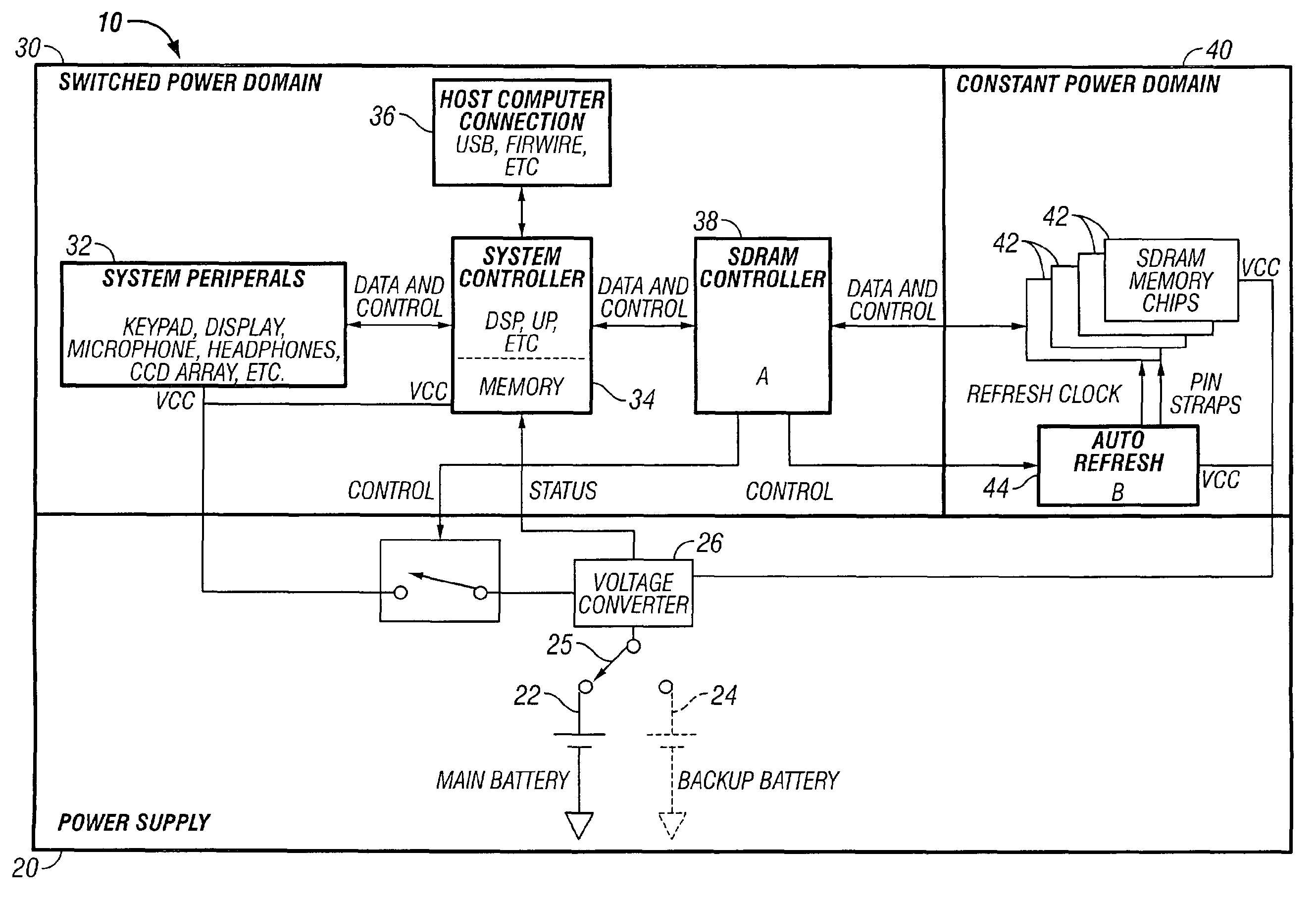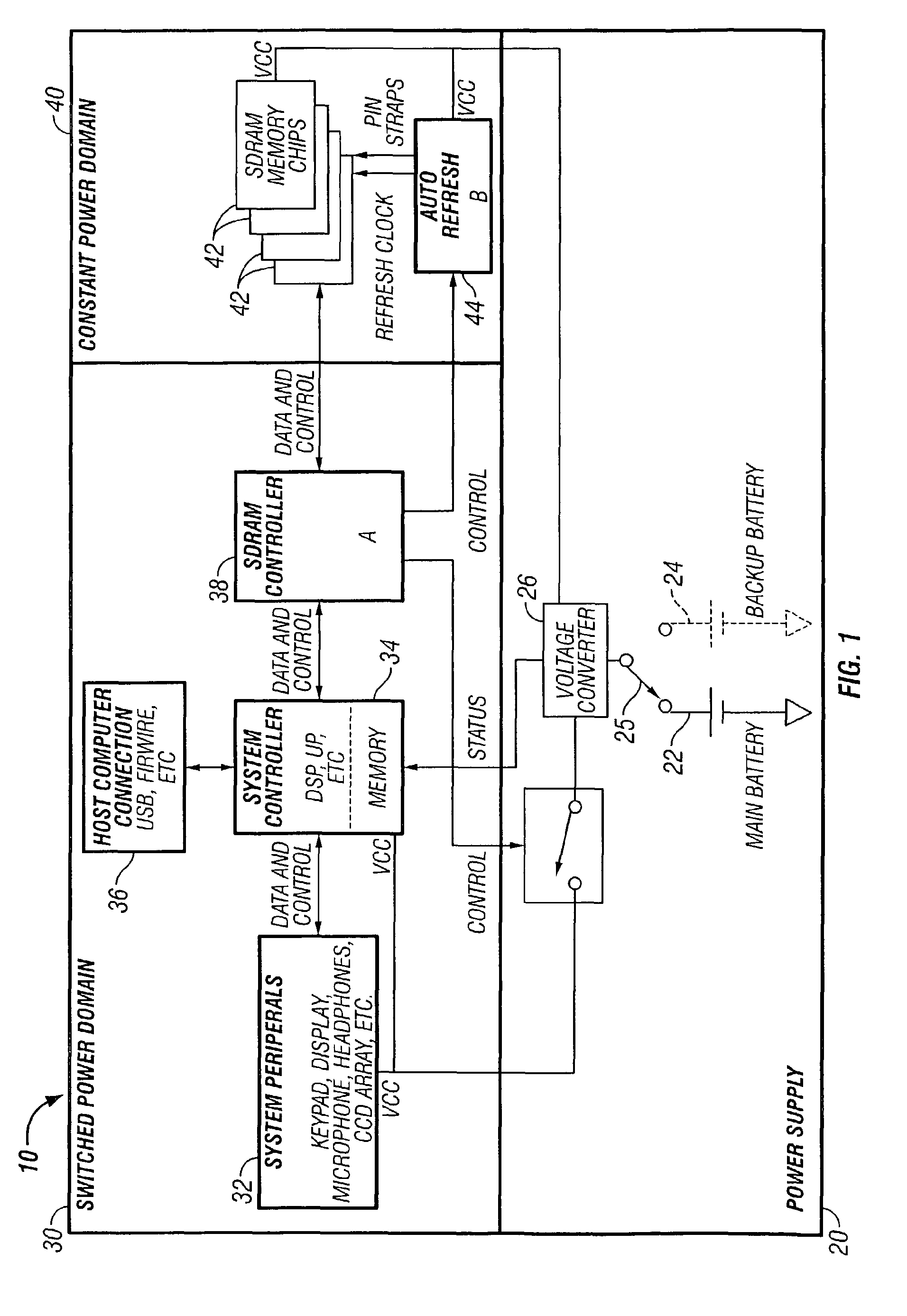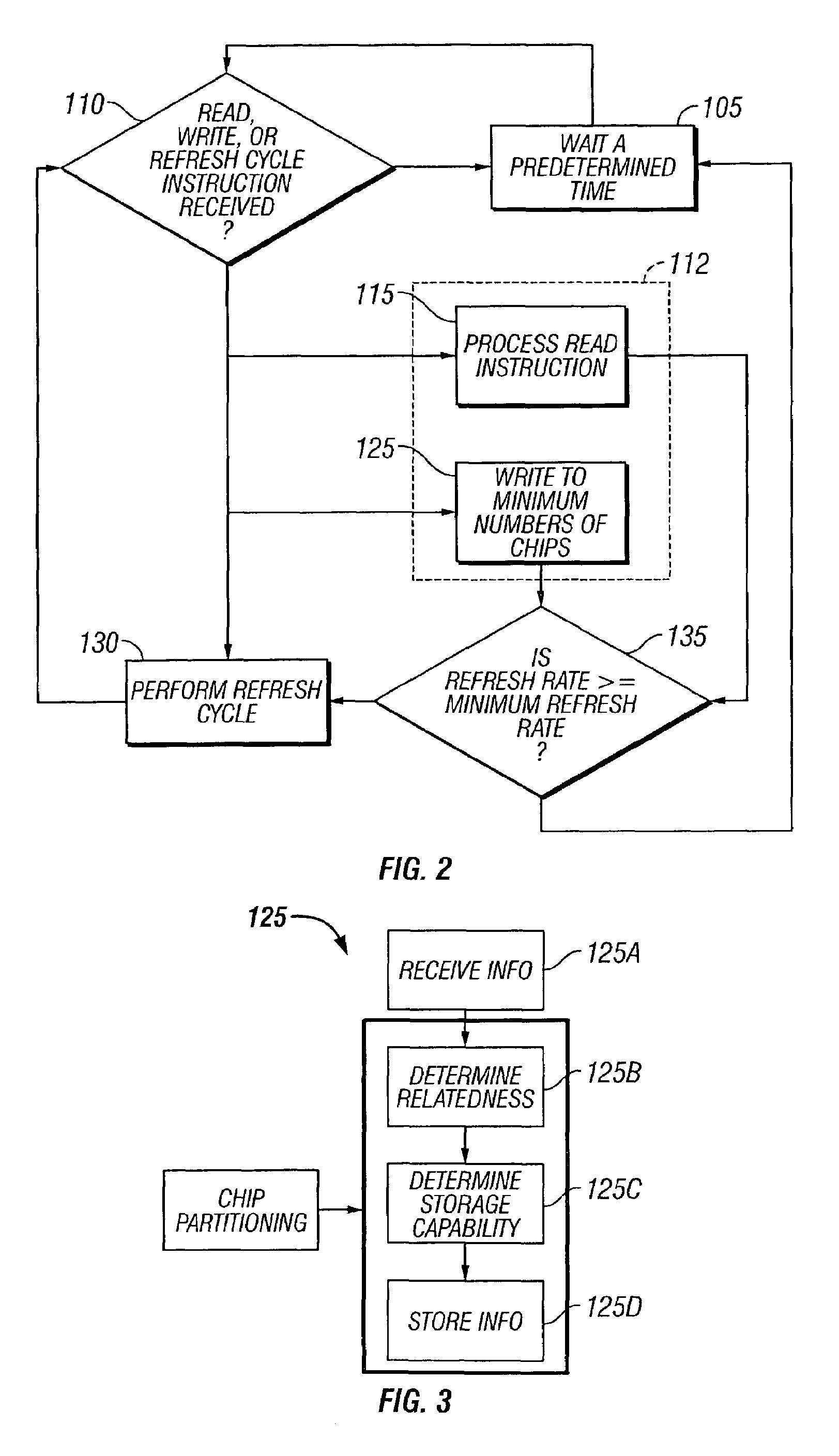Dynamic memory management
a memory management and dynamic technology, applied in the field of dynamic memory management, can solve the problems of large information storage capacity, large amount of power, bulky and large, and memory systems are typically either very expensive or require too much power, so as to avoid loss of stored information
- Summary
- Abstract
- Description
- Claims
- Application Information
AI Technical Summary
Benefits of technology
Problems solved by technology
Method used
Image
Examples
Embodiment Construction
[0022]The present invention solves the shortcomings of previous battery-powered device information storage systems with methods and systems for storing information in volatile memory. The discussion throughout this application of “SDRAM” applies equivalently to other types of dynamic volatile memory.
[0023]The use of inexpensive volatile memory for the non-volatile storage of information in battery-powered devices provides the power, size, and reliability advantages of non-volatile memory, but reduces the cost. A cost-effective dynamic memory type currently available is Synchronous Dynamic Random Access Memory (SDRAM). Other types of DRAM are also dynamic, and the scope of the present invention, as claimed, is not limited to any particular type of volatile memory. Due to the use of SDRAM memory chips in personal computers, this memory type is available in high volumes at low cost. In order for SDRAM to be considered a viable replacement for non-volatile memory systems such as flash m...
PUM
 Login to View More
Login to View More Abstract
Description
Claims
Application Information
 Login to View More
Login to View More - R&D
- Intellectual Property
- Life Sciences
- Materials
- Tech Scout
- Unparalleled Data Quality
- Higher Quality Content
- 60% Fewer Hallucinations
Browse by: Latest US Patents, China's latest patents, Technical Efficacy Thesaurus, Application Domain, Technology Topic, Popular Technical Reports.
© 2025 PatSnap. All rights reserved.Legal|Privacy policy|Modern Slavery Act Transparency Statement|Sitemap|About US| Contact US: help@patsnap.com



